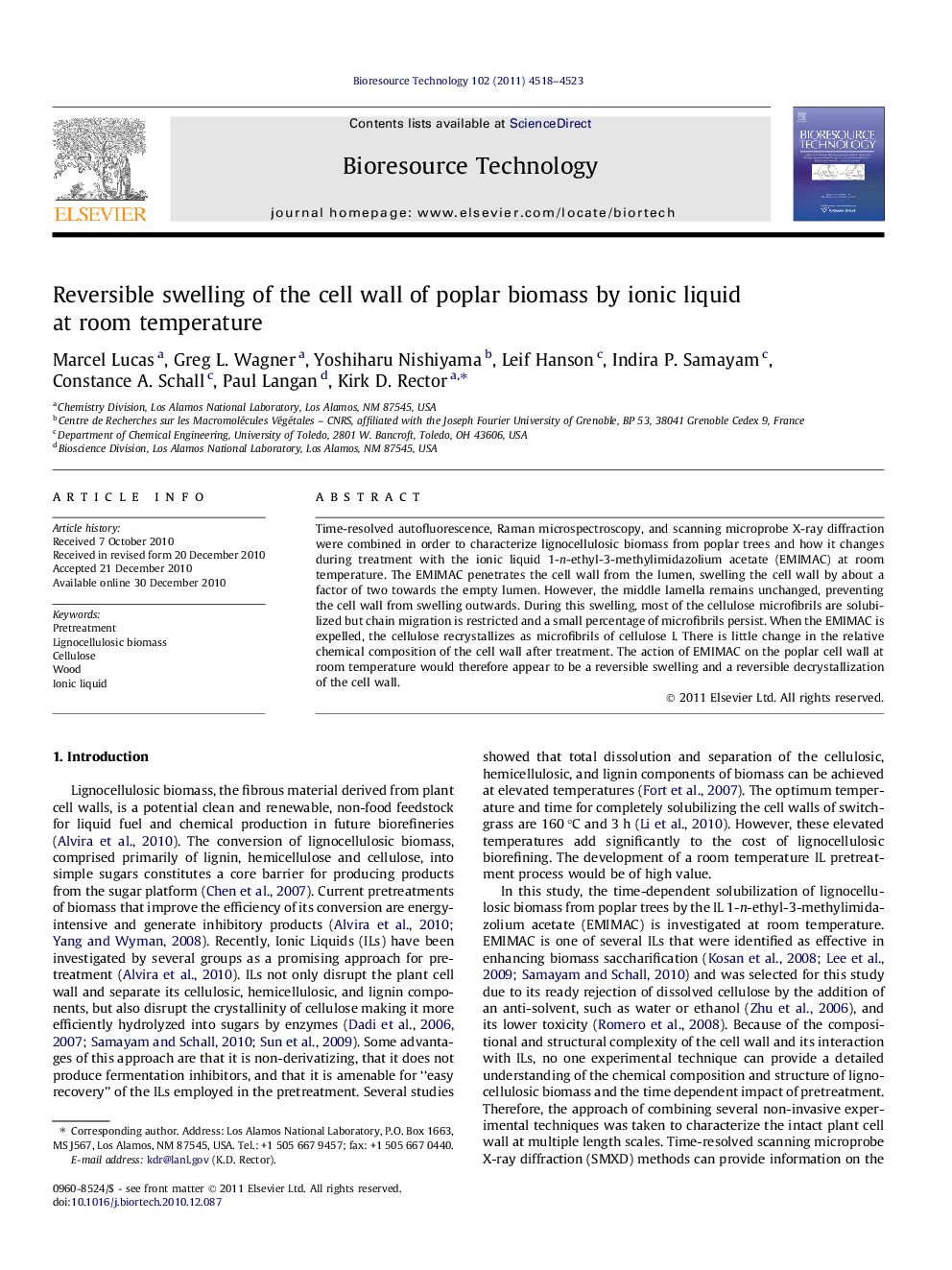| کد مقاله | کد نشریه | سال انتشار | مقاله انگلیسی | نسخه تمام متن |
|---|---|---|---|---|
| 682235 | 888978 | 2011 | 6 صفحه PDF | دانلود رایگان |

Time-resolved autofluorescence, Raman microspectroscopy, and scanning microprobe X-ray diffraction were combined in order to characterize lignocellulosic biomass from poplar trees and how it changes during treatment with the ionic liquid 1-n-ethyl-3-methylimidazolium acetate (EMIMAC) at room temperature. The EMIMAC penetrates the cell wall from the lumen, swelling the cell wall by about a factor of two towards the empty lumen. However, the middle lamella remains unchanged, preventing the cell wall from swelling outwards. During this swelling, most of the cellulose microfibrils are solubilized but chain migration is restricted and a small percentage of microfibrils persist. When the EMIMAC is expelled, the cellulose recrystallizes as microfibrils of cellulose I. There is little change in the relative chemical composition of the cell wall after treatment. The action of EMIMAC on the poplar cell wall at room temperature would therefore appear to be a reversible swelling and a reversible decrystallization of the cell wall.
Figure optionsDownload as PowerPoint slideResearch highlights
► EMIMAC swells poplar cell walls by about a factor of two at room temperature.
► During swelling, cellulose microfibrils are solubilized but migration is restricted.
► Upon EMIMAC expulsion, the cellulose recrystallizes as cellulose I microfibrils.
► EMIMAC action is a reversible swelling accompanied by a reversible decrystallization.
► EMIMAC action could be exploited to introduce materials/chemicals into the cell wall.
Journal: Bioresource Technology - Volume 102, Issue 6, March 2011, Pages 4518–4523